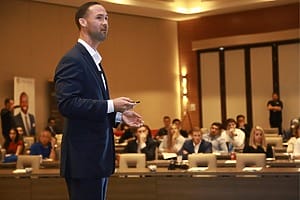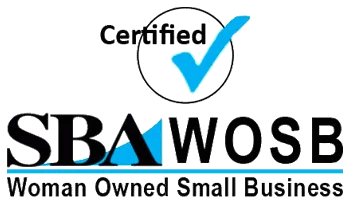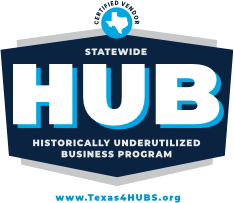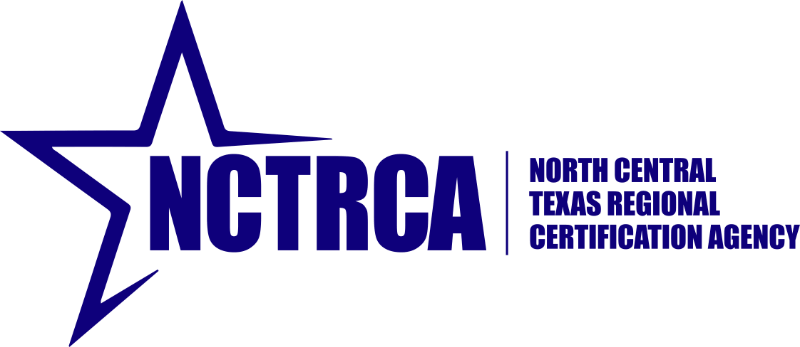“The two most important days in your life are the day you are born and the day you find out why.”
– Mark Twain.
This famous quote resonates deeply in the corridors of tech leadership. In an industry defined by rapid growth and constant disruption, even high-achieving CTOs and VPs can hit a wall where the “why” behind their work grows blurry. One seasoned engineering director, for example, found himself pouring endless hours into firefighting daily crises, only to feel oddly disengaged and burnt out. His company was scaling, but he wasn’t sure to what end. It’s a scenario many tech leaders face: you’re driving results, but somewhere along the way, the sense of purpose that fuels those results fades into the background.
For tech executives, rediscovering that sense of purpose isn’t just a feel-good exercise – it’s a strategic imperative. Purpose acts as a leadership compass, sharpening strategic clarity, sparking innovation, and amplifying one’s influence across the organization. Research bears this out: in organizations where purpose is a core driver of strategy, executives report greater ability to deliver growth and drive successful innovation . Conversely, only 12% of leaders rate themselves as highly effective at balancing strategy, innovation, and purpose – a gap that often shows up in muddled priorities or uninspired teams. In a field as unforgiving as tech, losing sight of the “why” can mean the difference between leading a visionary team versus just managing the status quo.
This is where a life coach or executive coach comes in. An effective coach acts as a guide and thought partner on the journey to reconnect with your core purpose. At Tandem Coaching, for instance, we often personalize the process to help leaders “find deeper meaning in [their] work” while achieving their goals . Through structured reflection, challenging questions, and alignment exercises, a coach helps peel back the layers of OKRs and KPIs to reveal the driving mission underneath. The result? Leaders who not only feel more energized and focused, but who also drive tangible organizational benefits – from clearer strategies to more innovative, engaged teams.
In the sections that follow, we’ll explore how discovering or refining your purpose as a leader fuels strategic clarity, innovation, and influence within your organization. You’ll read light real-world scenarios drawn from tech leadership coaching, see coaching insights and frameworks in action (from Simon Sinek’s “Start with Why” to the Ikigai of leadership), and glean research-backed principles that turn purpose from a nebulous ideal into a practical leadership tool. Whether you’re navigating hyper-growth, industry disruption, a bout of burnout, or a career inflection point, clarifying your purpose can be a game-changer. Let’s dive into the why – and how – of purpose-driven leadership for tech executives.
TL;DR;
•Purpose sharpens strategic clarity: When a tech leader reconnects with their “North Star,” decision-making becomes more focused and aligned. Clarity of purpose guides what to prioritize and why, ensuring strategy isn’t just driven by the crisis of the day .
•Purpose fuels innovation: Leaders who infuse their teams with a strong sense of purpose create an environment of inspiration and curiosity. Companies with a clear purpose “transform and innovate better,” and even report 30% higher levels of innovation .
•Purpose amplifies influence and engagement: Communicating an authentic vision (“the why”) rallies teams. Nearly 90% of executives say a strong collective purpose boosts employee satisfaction , and employees themselves seek meaning at work – 70% say their job defines their sense of purpose . Purpose-driven leaders inspire trust, loyalty, and higher performance.
•Coaching helps unlock purpose amid challenges: An executive coach provides a guided process to uncover your core values and purpose, especially critical at inflection points or during burnout. Coaching can rekindle a sense of purpose that stress and fatigue have obscured , leading to renewed energy, resilience, and focus.
•Organizational payoff is tangible: Purpose-led leadership isn’t just personal – it drives results. Purpose-oriented leaders see improved strategic execution, more innovation, and teams that are motivated by a shared mission. The ripple effect can shape culture and even bottom-line growth over the long term .
Purpose: The Compass for Strategic Clarity
Core insight: A clear sense of purpose acts like a strategic compass for leaders. It cuts through the noise of endless Slack pings and project backlogs, helping you focus on what truly drives value. Think of purpose as your North Star – when you’ve defined “what winning looks like” at a deeper level, aligning day-to-day decisions with long-term vision becomes much easier. As executive coach and author Simon Sinek famously put it, “People don’t buy what you do; they buy why you do it.” When you as a leader are crystal clear on that “why,” it’s much simpler to communicate priorities and make strategic choices that resonate with both your team and your customers.
Scenario: Consider a VP of Product at a SaaS startup hitting an inflection point. The company’s initial product gained traction, but now new opportunities (and competitor threats) abound. This VP finds herself pulled in a dozen directions – should they expand into a new market? Pivot the platform for a different user base? These are high-stakes decisions. Through coaching, she steps back and examines her core purpose and the company’s founding mission. She realizes her driving purpose as a leader is “to empower small businesses through simple, elegant software solutions.” In light of that purpose, certain choices become clear: rather than chase an enterprise client segment that doesn’t fit that mission, she doubles down on features that make the product even more accessible to small business owners. The result is a more coherent strategy that the whole team can rally behind. Strategic clarity emerged once her personal leadership purpose and the organization’s vision snapped into alignment.
Coaching principle: A life coach might use frameworks like the “True North” exercise or guided visualizations to help execs articulate their purpose. Often, this involves identifying core values and peak moments of fulfillment in one’s career. For a tech leader, that might be recalling the excitement of solving a customer’s pain point or mentoring a team member to success – clues to what truly matters to you. Coaches also borrow techniques from positive psychology and design thinking: one tool is the Ikigai diagram (a Japanese concept meaning “reason for being”), which maps what you love, what you’re good at, what the world needs, and what you can be paid for. Finding the intersection can illuminate a personal mission statement. The specific method may vary, but the goal is the same: to articulate a clear and motivating purpose statement that serves as a decision filter. In fact, leadership experts consider the process of articulating your purpose and finding the courage to live it “the single most important developmental task” for a leader . It’s the bedrock upon which strategic clarity is built.
Research-backed insight: When leaders ground their strategies in purpose, the impact is measurable. A Harvard Business Review Analytic Services study (sponsored by EY) found that executives at companies that had embedded purpose into strategy reported a greater ability to “deliver revenue growth” and “drive successful innovation and ongoing transformation” . In those organizations, purpose wasn’t a plaque on the wall; it was a practical guide for decision-making. Another study of over 1,000 leaders who went through a “purpose-to-impact” coaching process showed dramatic results – many earned faster promotions and saw sustained business improvements, and most importantly “developed a new ability to thrive in even the most challenging times” . In short, purpose-driven clarity can translate to agility and grit in leadership. Conversely, without a clear purpose, leaders can drift. It’s telling that when purpose isn’t front-and-center, even accomplished executives tend to default to generic goals (“drive success,” “ensure growth”) and often fail to achieve their most ambitious targets . Clarity of purpose provides the focus needed to aim higher and actually hit the mark.
Coaching in action – strategic clarity: A coach will often begin an engagement by helping a leader zoom out from quarterly OKRs and refocus on the bigger picture. For example, at Tandem Coaching we emphasize reflection on core values and long-term aspirations as a first step. Our experience has shown that this kind of deep inquiry pays off. Leaders frequently report that coaching gives them “a rejuvenated sense of purpose and direction,” as well as clarity on their goals . One Fortune 500 company’s leadership development program found that after coaching, participants had an enhanced sense of strategic clarity and could navigate complex decisions more confidently . The coach serves as an unbiased sounding board, asking probing questions like: “What will success look like for you in 5 years?” “Which of these options best aligns with the impact you want to have?” This guided questioning helps execs cut through analysis-paralysis. As the fog lifts, strategic priorities realign with the leader’s authentic purpose. The VP of Product in our scenario walked away from coaching sessions with a clear roadmap – not because her coach handed her answers, but because the coach helped her uncover what she already knew deep down was the right path.
Actionable guidance: If you’re seeking greater strategic clarity, start by articulating your leadership purpose in writing. Draft a short purpose statement that answers, “Why do I lead?” Don’t worry about making it perfect or flowery – make it authentic. Then, test your current projects and strategic initiatives against that statement. Ask: Are these efforts serving my core purpose, or are they distractions? You might find you need to cull or delegate projects that aren’t aligned. Another tip: try the “Monday Morning Test.” Imagine it’s Monday morning and you’re heading into work; picture the tasks or achievements that would genuinely excite you to jump out of bed. How do those map to your stated purpose? Use that insight to prioritize. Lastly, consider engaging a trusted mentor or executive coach to challenge your assumptions. A coach can provide exercises to clarify your vision (for instance, writing a “leadership eulogy” describing the legacy you want to leave) and help translate that vision into concrete strategic choices. The process is about making sure your day-to-day leadership is guided by a clear why – your compass in the chaos of tech leadership.
“Efforts and courage are not enough without purpose and direction.”
– John F. Kennedy
Purpose as a Catalyst for Innovation
Core insight: Purpose isn’t just a philosophical nicety – it’s a practical driver of innovation. In tech, where creativity and agile thinking are currency, a well-defined purpose can ignite teams to explore bold ideas beyond the ordinary. When everyone understands the bigger mission, they’re more willing to ask, “What if…?” and take smart risks to achieve it. Purpose widens the lens through which you view opportunities: it helps leaders and teams “redefine the playing field” of their business, often revealing new growth territories and fresh solutions . In short, when you know why you’re innovating, what and how you innovate become more imaginative and ambitious.
Scenario: Imagine a CTO of a midsize enterprise software company facing stagnation. Their core product is solid but not exactly inspiring the troops lately – the roadmap feels like incremental tweaks rather than game-changing features. Sensing this, the CTO engages in coaching to rediscover what excites him about the technology. Through introspection, he recalls why he joined the company in the first place: to “revolutionize how businesses collaborate across distances.” That was the purpose that got him out of bed years ago. Over time, slogging through backlog grooming and production issues, that lofty goal got lost. With his coach, the CTO works to bring that purpose back into focus and communicate it to his team. He starts sharing a renewed vision in meetings: stories of customers who could one day use their platform to seamlessly collaborate worldwide. This infusion of purpose energizes the engineering teams. Hackathon participation jumps as developers propose daring new features aligned with the vision (some using AI to automatically connect remote workers in more intuitive ways). Within months, the company greenlights an experimental “moonshot” project – something that would never have surfaced if the CTO hadn’t signaled that big ideas are welcome here in service of the greater mission. By reconnecting to purpose, the CTO effectively gave his team permission to innovate.
Coaching insight/framework: A useful framework here is “Start with Why,” popularized by Simon Sinek’s Golden Circle model. Leaders often naturally talk about what they’re building or how they’re building it; a coach will encourage shifting the narrative to why they’re building it. In practical terms, this might involve crafting a purpose-driven vision statement for a product or project and using it as a rallying cry. Coaches might also use visioning exercises – for example, asking a leader to envision the ideal future state if their purpose is fully realized in the product. Another technique is the “5 Whys” (often used in lean problem-solving): apply it not only to root-cause analysis, but to goals. Keep asking “why is that important?” until you hit the fundamental purpose behind an initiative. This can reveal whether a project is truly innovative or just a vanity exercise. Additionally, frameworks like OKRs (Objectives and Key Results) can be tweaked to be purpose-driven – the Objective should tie to a higher purpose. A coach might help ensure your OKRs answer not just “What do we want to achieve?” but “Why does it matter?” By embedding purpose in these goal-setting frameworks, you create space for more creative approaches to achieve the goal. Teams become more innovative when they understand the meaning behind the metrics.
Research-backed insight: There’s compelling evidence that purpose-driven companies outperform in innovation. A global survey by Harvard and EY found that companies with a strong sense of purpose “are able to transform and innovate better.” Executives who treat purpose as a core driver of strategy reported a greater ability to drive successful innovation and transformational change . The numbers tell the story: 53% of executives at purpose-driven companies said their organization is successful at innovation and transformation, versus only 19% at companies that have not articulated a purpose . That’s a staggering gap. It suggests that clarity of purpose can more than double the odds of innovation success. Similarly, Deloitte’s research found purpose-driven companies report 30% higher levels of innovation output than their peers . Why? One reason is that purpose can expand an organization’s definition of value – teams look beyond the next product release and think about broader impact, which fosters out-of-the-box thinking. Purpose also acts as a motivator; when teams feel connected to a meaningful goal, they’ll go the extra mile to solve tough problems (often in novel ways). A Harvard Business Review piece described how some firms used purpose to “reshape their value proposition” and deliver new benefits to customers, fueling long-term growth . In practice, that might mean pivoting a product to serve an unmet need that aligns with the company’s mission, or integrating technologies from other industries to solve a bigger problem. Purpose gives innovation strategic direction – it’s innovation with intention, rather than innovation for its own sake.
Real-world example: We see this in many tech success stories. Take Microsoft’s transformation under CEO Satya Nadella. He re-framed Microsoft’s purpose as “empowering every person and every organization on the planet to achieve more.” That broad, inspiring mission led Microsoft to invest in innovative cloud services and AI (areas where they had lagged), ultimately revitalizing the company’s growth and culture. A life coach working with a leader like Nadella might have encouraged that very approach – revisiting core purpose to break free from a narrow view of the business and to encourage innovative bets. Another example: a coaching client, the founder of a health-tech startup, realized during a purpose discovery exercise that her deepest motivation was to “make healthcare more human-centric.” This clarity pushed her to experiment with incorporating patient empathy data into the product’s AI algorithms, a cutting-edge innovation that set her company apart. These kinds of leaps happen when a leader connects the dots between purpose and possibility.
Actionable guidance: To leverage purpose as an innovation catalyst, try these steps:
•Craft a Purpose Statement for Innovation: If you have a team or product, write down the ultimate purpose it serves. Use ambitious language. For instance, “Our purpose is to reinvent urban living through sustainable tech,” or “to connect gamers worldwide in a bond of community.” Share this with your team and weave it into your project kickoffs and design discussions. It will orient brainstorming toward ideas that serve that bold purpose.
•Ask Purposeful Brainstorming Questions: In your next innovation meeting, frame the challenge with purpose. Instead of saying “We need to increase market share by 5%,” reframe to “How might we fulfill our mission of X in a way that also delights more customers?” You’ll find the discussion becomes more expansive. Encourage “blue sky” ideas that, even if not immediately feasible, contain kernels that align with your why.
•Empower a “Purpose Champion”: Identify someone on your team (or yourself) to be the watchdog for purpose alignment. In tech companies, product managers or engineering leads can take on this role. Their job is to continually ask during development, “Does this feature/idea serve our larger purpose?” If the answer is no, maybe resources should shift to something that does. This practice keeps innovation efforts from drifting.
•Integrate Purpose into Goals: When setting innovation objectives, explicitly tie them to the mission. For example, rather than “Launch 3 new features using AR technology,” a purpose-linked goal might be, “Launch AR features that help fulfill our purpose of improving remote collaboration.” This way, the success criteria isn’t just launching something new – it’s launching something meaningful.
•Leverage coaching or workshops: Sometimes an outside perspective helps shake up status quo thinking. Consider an innovation workshop with a coach or facilitator who can introduce purpose-driven ideation techniques. At Tandem, our leadership development programs often include sessions on visionary thinking, where we push leaders to envision the “ideal future” of their company if their purpose is fully realized. Those visions often seed innovative projects. We’ve seen that when leaders give themselves permission to dream big in line with their purpose, they unlock creativity in their teams as well.
In summary, purpose can be the spark that lights the fire of innovation. It provides both the inspiration (“this is worth pursuing”) and the direction (“this is why it matters”) that keep innovation efforts from fizzling out. Purpose-led innovation means your next breakthrough idea won’t be random – it will be deeply connected to the change you want to make in the world, which makes that breakthrough infinitely more powerful.
“Innovation ultimately comes from connecting dots of meaning. Purpose draws the picture that those dots form.”
– Adapted from Steve Jobs’ philosophy of connecting dots
Leading with Purpose to Amplify Your Influence
Core insight: Leadership is influence – the ability to inspire and guide others – and nothing galvanizes people quite like a clear, authentic purpose. When you lead with purpose, you’re not just managing tasks, you’re creating meaning. In tech organizations, where talented professionals crave more than a paycheck, a leader who communicates a compelling “why” can turn a group of employees into a motivated tribe. Purpose-driven leaders exude a sense of authenticity and conviction that is contagious. It bolsters your executive presence: people sense when a leader is guided by something deeper than quarterly targets, and they’re more likely to trust and follow that leader through challenges. In short, finding your purpose can make you a more influential leader – one who shapes culture and drives impact beyond your formal authority.
Scenario: A Director of Engineering at a growing fintech company notices that despite hitting metrics, her team’s morale is slipping. Turnover is inching up, and she struggles to get buy-in on key architectural changes. In coaching, it becomes clear that while she’s excellent at execution, she seldom talks about why their work matters. The product they build helps underbanked communities access credit, but in the grind of delivery schedules, that purpose got lost. Through guided reflection, she reconnects with her personal mission: “to use technology to level the playing field for the less advantaged.” She realizes this has been a quiet driver for her all along (it’s why she joined a fintech with a social impact angle), but she hasn’t been voicing it. The coach encourages her to weave this purpose into her leadership narrative. She starts sharing customer stories in team meetings – for example, how a single mother used their app to secure a loan for a family need. She also opens up about her own passion for this mission, something she’d never done, thinking it too sentimental for the workplace. The effect is profound. Engineers who were considering leaving feel a renewed sense of pride in their work. One senior developer says, “I finally see how my code makes a difference.” The director’s credibility and influence grow; when she later proposes a major refactoring to improve scalability (a tough sell ordinarily), the team is on board because they trust it aligns with the greater good. By leading with purpose, she transformed from a task manager to a vision carrier – and her influence skyrocketed.
Coaching principle: A key coaching principle here is authentic leadership – helping leaders align their actions with their core values and express them consistently. Coaches might use values assessments or 360-degree feedback to identify where a leader’s walk isn’t matching their talk (or where their talk is absent altogether). In the example above, the director valued social impact deeply, but her team didn’t know it. Coaches will often role-play or practice storytelling with leaders: crafting a leadership story that includes personal anecdotes about why the work matters to them. This isn’t fluff – it’s building the leader’s communication toolkit to include inspiration, not just information. Another relevant framework is stakeholder-centered coaching, which Marshall Goldsmith champions – it involves actively engaging your stakeholders (your team, peers, etc.) in your development. For influence, this could mean soliciting feedback on whether your vision is clear to others, and adjusting. A life coach might encourage a leader to articulate a vision statement for their team and then consistently communicate it. Also, working on emotional intelligence is key: understanding one’s own emotions around purpose and being able to convey passion in a genuine way. For some technically-minded executives, this is an area of growth – moving from data-driven conversations to also connecting at a values-driven, emotional level. The coach creates a safe space to practice this, perhaps by having the leader answer the question: “What do you stand for, and how do you let your team know it?”
Research-backed insight: The connection between purpose and influence is well documented. Employees today, especially in the tech sector, seek meaning in their work. A recent McKinsey study found that 70% of employees say their sense of purpose is largely defined by work – they aren’t just punching the clock . When their leaders articulate a meaningful purpose, it directly boosts engagement and loyalty. It’s no surprise, then, that 89% of executives believe a strong sense of collective purpose drives employee satisfaction . People want to feel part of something bigger, and leaders who provide that narrative gain influence naturally. There’s also a trickle-down effect: Purpose-led leadership contributes to a positive culture, and culture has a powerful influence on performance and retention. According to the Harvard Business Review, leaders who infused purpose into their organizations were able to “align stakeholders on common goals” and build teamwork more effectively . Moreover, purpose-led companies often enjoy stronger reputations, which can amplify a leader’s external influence in their industry. Internally, one can measure influence by things like volunteerism for extra projects or willingness to go above and beyond. Teams led by purpose-driven managers often exhibit higher discretionary effort – people willingly tackle challenges because they believe in the cause. This aligns with research from consulting firm DDI, which notes that when leaders connect strategy to a larger mission, they “enable people to perform their best and achieve better business results” . Influence built on purpose is more enduring than influence built on authority, because it’s rooted in respect and inspiration. Even when tough times hit (layoffs, pivots, etc.), a team that trusts its leader’s purpose will stick together longer and maintain morale, compared to a team that feels like cogs in a machine.
Coaching takeaway: One insight I often share with tech leaders is that communicating purpose is a skill that can be learned. Early in my coaching career, I worked with a brilliant engineering VP – let’s call him Arjun – who struggled with motivating his team. He was logical to a fault, and his updates to his org were bone-dry: all sprint velocities and uptime stats. Through coaching, Arjun discovered that deep down, he was passionate about how his company’s technology could connect people (similar to our fintech director story). He just didn’t think it was “professional” to talk about that at work. We worked on weaving that passion into his communication. He started small – sharing a personal story at an all-hands about why he got into tech – and found the audience surprisingly receptive. Over a few months, Arjun grew more comfortable rallying his team around a vision, not just a plan. He told me that finding the courage to voice his why not only energized his team, it made him feel more confident in himself as a leader. This reflects a common coaching theme: when you align your leadership style with your purpose, you project authenticity, which is a cornerstone of influence. People can tell when a leader is genuine versus when they are just reciting corporate speak.
Actionable guidance: To amplify your influence through purpose, consider these actions:
•Develop Your Leadership Story: Carve out time to write down pivotal moments that shaped your career and values. Perhaps it was a project failure that taught you resilience or a mentor who inspired your philosophy. Identify the through-line of purpose in these stories. Then share bits of this narrative with your team over time – in town halls, team meetings, 1:1s. For example, “Early in my career, I realized that what really drives me is using data to make people’s lives easier. That’s why I’m excited about this new feature – it’s not just code to me; it’s a way to help our users breathe easier.” These personal snippets humanize you and reinforce the purpose behind the work.
•Use “Why” in Communication: Make it a habit to start explanations of any decision or goal with the why. If you’re announcing an OKR, don’t jump straight to the numbers – start with, “Our goal this quarter is X because it will move us closer to our mission of Y.” Repeating the purpose in various forums feels redundant to you, but it’s necessary for others. Great leaders are often Chief Repetition Officers when it comes to purpose.
•Align Purpose with Team and Individual Goals: Influence grows when people see you care about their growth too. In your one-on-ones, help team members connect their personal career aspirations with the organization’s purpose. For instance, if you have an engineer who values creativity, you might say, “I see your creativity as crucial to our purpose of innovating in healthcare – maybe you could lead our hackathon on patient-centric design.” This not only empowers them but reinforces the narrative that everyone’s work contributes to the shared purpose. It builds a sense of belonging and significance.
•Walk the Talk: Influence rooted in purpose will crumble if your actions contradict your espoused values. If you declare that customer well-being is your purpose, then cut corners on customer support to save costs, credibility is lost. A coach can help by holding a mirror to such inconsistencies. Solicit feedback: ask a few trusted colleagues if your decisions reflect your stated principles. This can be humbling, but it’s immensely valuable. When people see you consistently make tough calls that honor the purpose (even if it means sacrificing short-term gains), your integrity solidifies and your influence grows. You become known as a leader who stands for something.
•Leverage influence externally: Purpose-driven influence isn’t just internal. Consider sharing your vision in broader forums – write a LinkedIn article about the purpose behind your company’s work or speak at an industry event about why this purpose matters. This not only boosts your personal brand as a thought leader but can attract talent and partners who align with that purpose. It creates a virtuous cycle: your influence attracts more believers in the mission, which in turn strengthens your cause within the company.
Finally, remember that influence is ultimately about trust. By leading with purpose, you’re saying to your team, “You can trust where I’m taking us, because I am guided by a mission that benefits all of us, not just myself.” Over time, that builds a loyalty that no amount of authority or technical expertise alone can achieve.
“People will forget what you said, people will forget what you did, but people will never forget why you did it.”
– Maya Angelou
Purpose as Fuel for Resilience and Growth
Core insight: The journey to the top in tech is rarely smooth – there are late-night crises, product failures, market shifts, and yes, bouts of burnout. One of the most under-appreciated benefits of knowing your purpose is the resilience it provides in the face of these challenges. Purpose is a stabilizing force; it’s what keeps you grounded and motivated when external pressures mount. As Friedrich Nietzsche (and later Viktor Frankl) observed, “He who has a why to live can bear almost any how.” In leadership terms, if you have a strong why to lead, you can bear the pivots, the setbacks, and the grind with more fortitude. When you and your team are exhausted or discouraged, reconnecting to purpose can be the mental and emotional reset that gets you back on course. In fact, recent perspectives in leadership development suggest that helping executives “live their purpose” can rejuvenate them more than even a break or vacation could . Purpose fuels not just day-to-day energy, but long-term growth as a leader, turning hardships into learning opportunities rather than breaking points.
Scenario: Let’s revisit our engineering director from earlier – say a year later, she has been promoted to VP of Engineering amid rapid company expansion. But with the glory comes immense pressure: 60-hour weeks, constant investor demands, and a nagging guilt about time away from family. She hits classic burnout – insomnia, decision fatigue, a sense of detachment. At one point she considers stepping down. Instead, she re-engages with her executive coach (because growth often brings new challenges!). The coach helps her pause and realign with her purpose. They explore questions like, “Beyond the metrics, what legacy do you want to leave through this role?” and “How does this job fulfill you personally?” Slowly, the fog lifts. She recalls how strongly she believes in the company’s mission to democratize finance, and how her role enables others (her team, millions of users) to benefit. That realization doesn’t erase the stress, but it reframes it. She decides to make some changes: delegating more, setting boundaries to protect personal time, and focusing on high-impact activities aligned with her purpose. With a reenergized mindset, she also initiates a new project that had been on the backburner – a mentorship program for junior developers from underrepresented backgrounds, which ties back to her core purpose of leveling the playing field. This endeavor recharges her; it reminds her why she became a leader. Over the next months, her burnout symptoms ease. The work is still intense, but it feels meaningful again. By tapping into purpose, she not only avoids quitting, she comes out the other side a more empathetic and focused leader. As she later reflected, “I learned that self-care for a leader isn’t just about downtime – it’s about connecting to what gives you energy. And nothing energizes me like knowing my work matters.”
Coaching insight: In tackling burnout or periods of extreme challenge, coaches often employ techniques from positive psychology and values coaching. One powerful exercise is revisiting core values and strengths: burnout can make even the most competent leaders feel ineffective and lost. A coach might prompt, “When have you felt most alive or proud at work? What values were you honoring then?” This helps rekindle that sense of competence and purpose that burnout obscures. In fact, strengths-based coaching explicitly reminds leaders of their core talents and values, “rekindling a sense of purpose that burnout may have obscured” . Another approach is to help the leader identify their personal mission statement and then diagnose where their current reality is misaligned with it. Often, burnout is exacerbated by a feeling of meaninglessness – working hard with no sense of impact or alignment. Coaches address this by finding aspects of the job that do connect to the leader’s purpose and amplifying those, while strategizing to minimize or reframe the aspects that don’t.
Frameworks like Mindfulness and Cognitive Reframing come into play too. A coach might introduce mindfulness practices to help the leader separate themselves from the swirl of stress and reconnect with what lies beneath (their why). Cognitive reframing can turn a thought like “I’m trapped in an endless grind” into “I’m enduring this phase for a larger purpose, and it will enable me to achieve X.” It’s not just spin; it’s reminding the brain of the meaning behind the effort. Additionally, coaches often have leaders set boundaries or self-care routines not as an afterthought, but as an integral part of honoring their purpose (“I need to sustain myself to accomplish my mission”). In executive coaching, it’s common to see a dual focus: improving performance and well-being. As one Tandem Coaching article noted, a coach is like a “trusted advisor” who helps leaders excel while also managing stress and avoiding burnout . This dual focus is critical because a burnt-out leader can’t effectively serve any purpose.
Research-backed insight: The link between purpose and mitigating burnout is getting increasing attention. A Forbes article on burnout put it succinctly: “The remedy to burnout cannot be only to make work more enjoyable or less demanding. It must include making work more meaningful.” . In other words, you can’t yoga-and-massage your way out of burnout (though those help); you need to reconnect work with purpose to truly heal the cynicism and fatigue. Daniel Goleman, the renowned emotional intelligence author, echoed this in a Korn Ferry study, noting that helping employees connect with their purpose “may do more to rejuvenate stressed employees than giving them more days off” . This applies equally to leaders themselves. When an executive remembers the “why” behind the 11 p.m. email blitz, it transforms exhaustion into determination. There’s neurological evidence too: burnout is characterized by a sense of inefficacy and detachment. But when people experience a sense of purpose, the brain’s reward pathways light up, counteracting those negative effects. In organizational research, employees (and leaders) who say they find purpose in their work report significantly higher job satisfaction and resilience. They are less likely to quit and more likely to view obstacles as surmountable challenges rather than dead-ends. One study cited by the International Coach Federation found that coaching and purpose-alignment initiatives led to improved well-being and “gains in resilience” among leaders and their teams .
Moreover, when leaders role-model purpose-driven resilience, it cascades. If you, as a leader, openly navigate a tough period by leaning on your mission (versus just slogging through or complaining), your team learns to do the same. It creates a culture where challenges are tackled with a sense of collective purpose rather than dread. I’ve observed this in tech companies that went through major pivots: the teams whose leaders kept reinforcing the larger vision fared far better morale-wise than those whose leaders went silent or purely task-focused under stress.
Coaching takeaways – lived experience: As an executive coach, some of the most rewarding turnarounds I’ve seen involved leaders overcoming burnout by rediscovering meaning. One client, a startup CEO in his late 30s, hit a wall after his second product failed to gain traction. He was on the verge of closing shop. In our sessions, I asked him why he started the company to begin with. He talked about wanting to improve everyday efficiency – his eyes lit up remembering how as a kid he’d build contraptions to save time on chores. That was his spark. We worked on reconnecting that childhood curiosity and purpose to his current situation. He realized he still cared deeply about solving that problem, even if the current product was a flop. With renewed conviction, he pivoted the company (and communicated the why to his remaining team, re-inspiring them). A year later, they had a successful pivoted product. He told me, “Honestly, coaching helped me fall back in love with the mission. That pulled me out of a dark place and got me back in the fight.”
Another takeaway: purpose can evolve at inflection points. Sometimes a leader outgrows an old purpose and needs to refine it to stay energized. I worked with a veteran CIO who felt burnt out after decades in the industry. It turned out his purpose had shifted from technology innovation (early in his career) to developing people in his later years. Once he recognized that, we reframed his role around mentorship and building a legacy of talent – and it was like a second wind. So, coaching through inflection points often involves updating your purpose to fit who you are now, not who you were 20 years ago.
Actionable guidance: How can you harness purpose for resilience in your own leadership journey? Here are a few strategies:
•Purpose Reminders: When stress is high, deliberately remind yourself (and your team) of the why. This could be through visual cues – for example, one engineering manager I know pinned a note in his workspace: “We create to improve lives,” to glance at during tough days. Some leaders keep a customer testimonial or a mission statement on hand to read when morale dips. It might sound cheesy, but these cues can interrupt a negative spiral and refocus your mind on the meaningful aspect of the grind.
•Journaling Your “Why” Moments: Keep a leadership journal where you note down instances that felt especially meaningful or aligned with your purpose. It could be small wins like a thank-you note from an employee you mentored, or a milestone that made you proud. During burnout phases, read back through these entries. Patterns in those moments might highlight what aspects of your purpose you should lean into more. It’s a way of practicing gratitude and reminding yourself of the impact you’ve had and can continue to have.
•Reclaiming Activities that Align with Purpose: Often, as leaders ascend, they get distanced from the activities that gave them joy. A purpose check might reveal, for instance, that you really miss interacting with customers, or coding, or brainstorming with designers – because that’s where you feel your purpose in action. Find ways to re-engage with those aspects periodically. Maybe attend a user feedback session, or block an afternoon to tinker with a prototype, or host skip-level meetings with junior staff if mentorship drives you. Reconnecting with the grassroots of your purpose can be energizing and reduce feelings of burnout which often stem from spending too much time on draining, non-purposeful tasks.
•Set Purposeful Boundaries: Recognize that saying “no” or delegating certain things can actually honor your purpose by freeing you to focus on what matters most. Frame it this way: By not doing X, I can better fulfill my purpose of Y. For example, “By not attending every minor status meeting (X), I can spend more time on strategic vision (Y).” This mindset can alleviate the guilt some leaders feel when they step back – you’re not dodging responsibility; you’re ensuring you have the bandwidth for your highest responsibility. Tandem’s coaching often involves helping leaders design these boundaries. Our leadership development programs sometimes literally include drafting an “energy audit” – listing tasks that drain vs. those that fulfill – and then restructuring one’s schedule around the fulfilling, purpose-aligned tasks as much as possible. The drained list gets addressed via delegation, deletion, or reframing.
•Leverage Support Networks: Resilience is bolstered by not going it alone. A life coach is one form of support, but also consider peer groups or mentors who share your sense of purpose. Talking to others who affirm your mission can be incredibly sustaining. For instance, if your purpose is social impact in tech, engage with communities or forums of like-minded leaders (there are plenty in the tech world). They can provide not just advice, but moral support that re-energizes you. Sometimes just knowing “I’m not the only one trying to change the world through code” is enough to keep you going on a rough day.
Above all, give yourself grace. Purpose is a powerful antidote to burnout, but it’s not a cure-all overnight. It’s like a muscle that you strengthen; over time, leading with purpose builds your endurance. You start to see obstacles not as pointless frustrations but as challenges on the path to a meaningful goal. And when you do eventually take that hard-earned vacation or sabbatical, it’s less about escape and more about renewal – because you know exactly what you’re coming back to and why it matters.
“At its core, resilience is about reconnecting with what matters. Purpose is the heartbeat of resilience.”
Conclusion
Tech executives are no strangers to complexity – whether it’s scaling a platform to millions of users, navigating a pivot in business model, or steering a team through crunch time. In the midst of these pressures, it’s all too easy to get consumed by the how and what and lose sight of the why. Yet, as we’ve explored, rediscovering your purpose as a leader can be a game-changer. It fuels strategic clarity by acting as your decision-making North Star. It sparks innovation by providing a clear vision that invites creative solutions. It amplifies your influence by inspiring and aligning those around you. And it fortifies you with resilience, turning burnout and setbacks into catalysts for growth rather than roadblocks.
Reflect for a moment on your own leadership journey. What drives you at the core? If you strip away titles and KPIs, why do you do what you do? It’s not a question we answer once and forget – it’s one to revisit at every new chapter of your career. Your purpose might evolve, and that’s okay (expected, even). The key is to keep it in focus. When purpose is front-and-center, work becomes less about pushing the proverbial rock uphill and more about chasing a vision that excites you and your team.
If you’re realizing that your sense of purpose has been on the back burner, consider this a gentle prompt to bring it forward. There are practical steps and resources to help you do so. You might start with some of the exercises mentioned in this article – journaling, vision crafting, or simply candid conversations with mentors or team members about the “why” behind the work. Additionally, engaging with a professional coach can provide dedicated space and guidance for this exploration. In my experience as an executive coach (and in our philosophy at Tandem Coaching), the goal is always to connect your personal journey with your organizational impact. It’s about helping you become the kind of leader whose clarity of purpose not only fuels your own performance but also “elevates [others] and transforms teams” in the process.
Tandem’s Executive Coaching and Leadership Development services, for example, are designed with this holistic growth in mind. From one-on-one coaching sessions focused on uncovering your motivators, to structured programs like our nine-month Leadership Development Program (with 360° feedback and group learning) that support you in turning purpose into action , the aim is to guide leaders to lead more consciously and effectively. Many tech leaders have found that through such coaching journeys, they emerge not just with new skills or strategies, but with a renewed sense of meaning in their work – which then radiates out to benefit their teams and companies. Whether through Tandem or another avenue, investing in your development as a purpose-driven leader is an investment in your organization’s future.
To wrap up, remember that finding your purpose is not a one-time epiphany—it’s an ongoing practice. It’s the quiet confidence in the boardroom when you advocate for a project that aligns with your mission. It’s the spark in your voice during an all-hands meeting when you talk about vision rather than just quarterly goals. It’s the calm in your gut during a crisis, knowing what truly matters and what doesn’t. Purpose is the guide that turns the uncertainty of leadership into an inspired journey. So ask yourself: What is my purpose, and how can I lead from it, starting now? The answers may unlock a new level of impact and fulfillment in your career.
Reflection prompt: Take a few minutes this week to jot down your personal leadership purpose statement. How does it align with what your organization needs right now? In what is one way you can express or act on that purpose in the next month?
If reading this has sparked something in you – a realization that you want to lead with more clarity or an urge to reignite that inner drive – consider taking the next step. This could mean sharing your thoughts with a colleague or mentor, or it could mean seeking out resources to deepen this journey. Executive coaching is one such resource that many leaders find transformative. Whether you partner with an executive coach through a firm like Tandem Coaching or tap into a leadership development program, give yourself the benefit of an objective ally in this process. Sometimes a few insightful conversations can unravel a tangle that’s been holding you back for years.
Ultimately, finding your purpose is about finding your power – the power to lead in a way that is bold, innovative, and true to you. And when you do that, you not only thrive as an individual, but you also become the kind of leader who leaves an enduring positive mark on your organization and the people within it. That is the essence of purpose-driven leadership. It’s a journey well worth embarking on, and if you need a guide on that journey, you know where to find one.
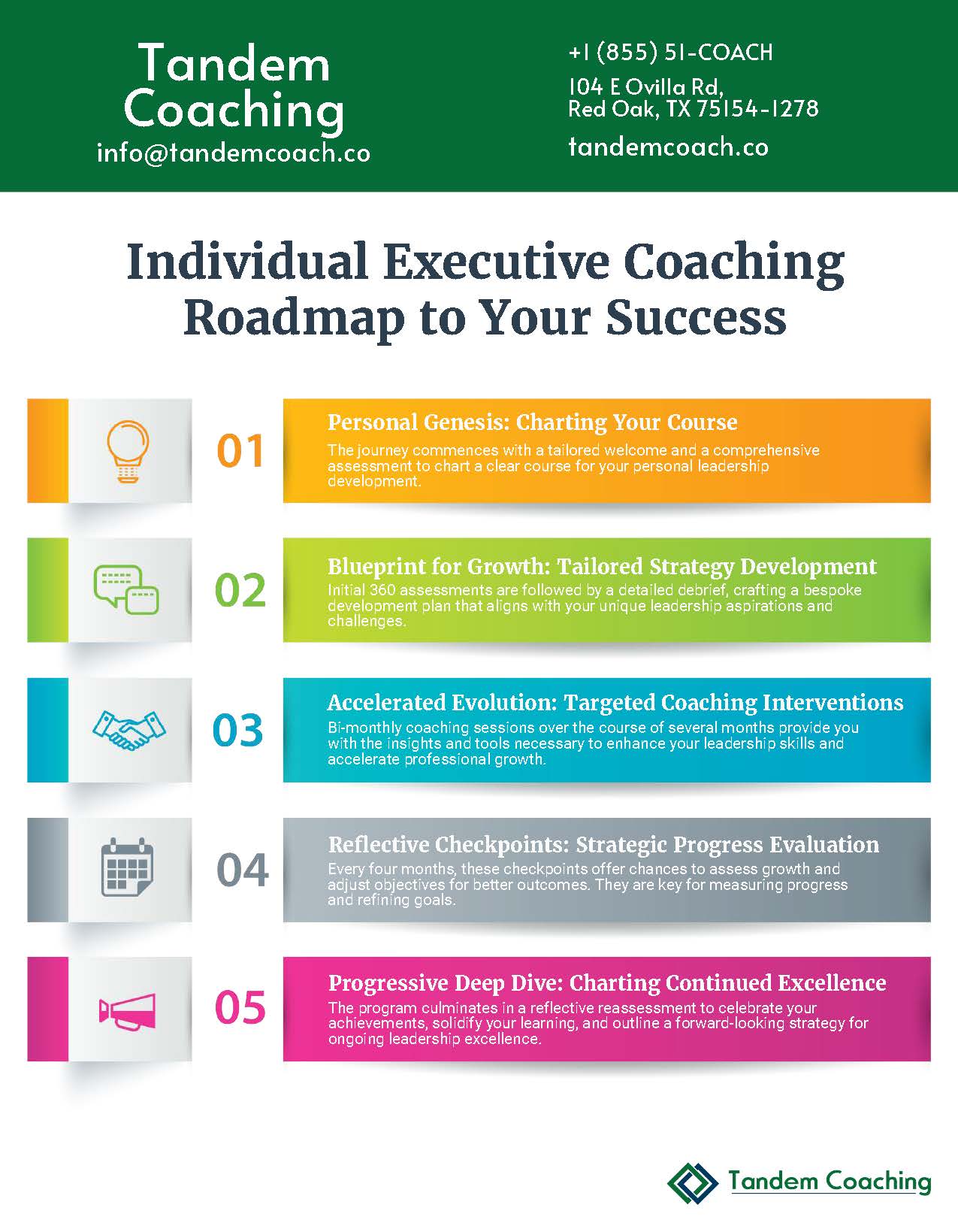

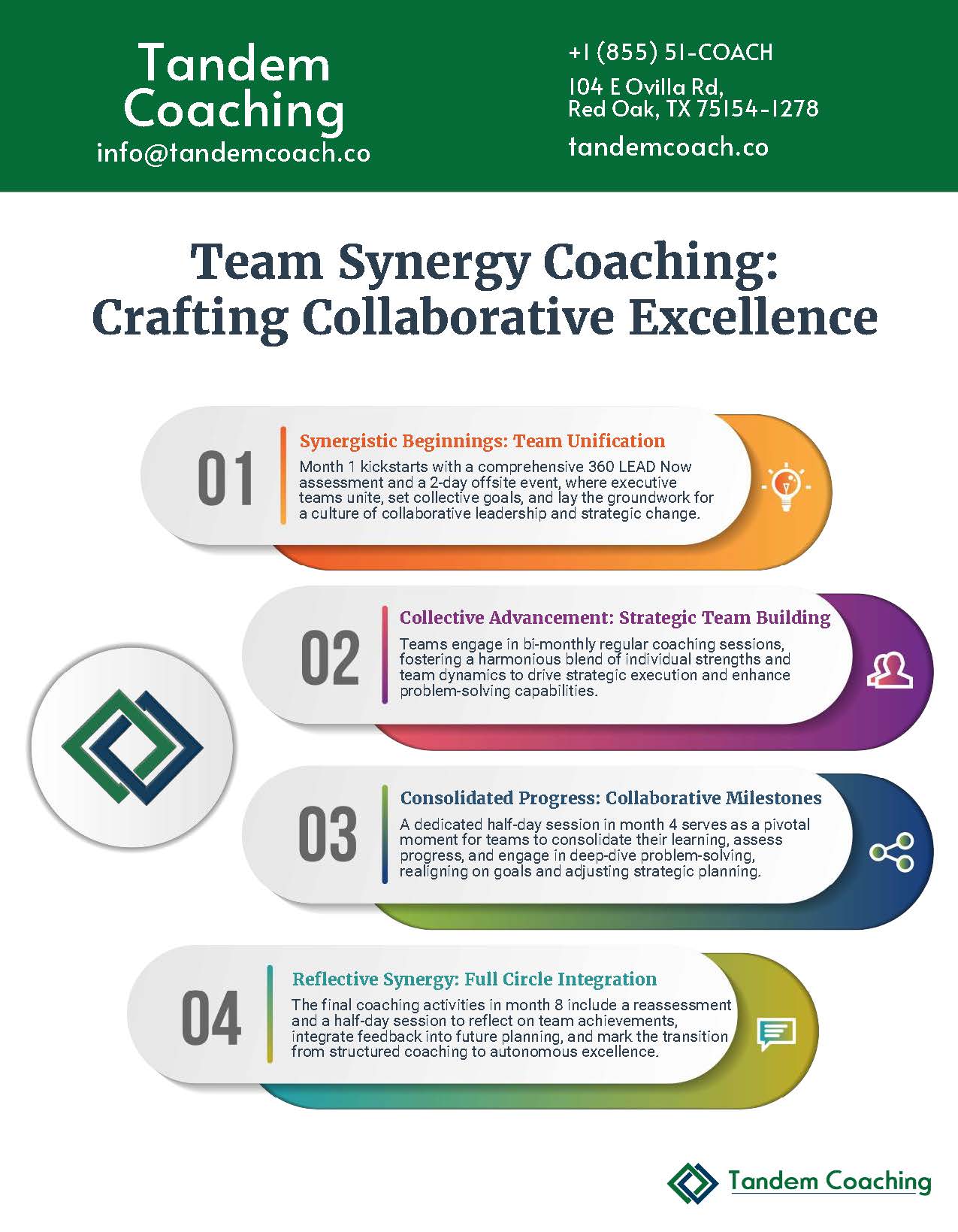
Boost Your Leadership Team Success!
Take your leadership team to the next level and achieve great results with our executive coaching.
Learn how our coaching and ASPIRE method can change things for you—get a free brochure to begin your journey.
About the Author
Cherie Silas, MCC
She has over 20 years of experience as a corporate leader and uses that background to partner with business executives and their leadership teams to identify and solve their most challenging people, process, and business problems in measurable ways.









